
12 minute read
NEWS

Covid-19 | GreenPort Congress | Equipment | Alternative power
NEW NORMAL

Covid-19 recovery
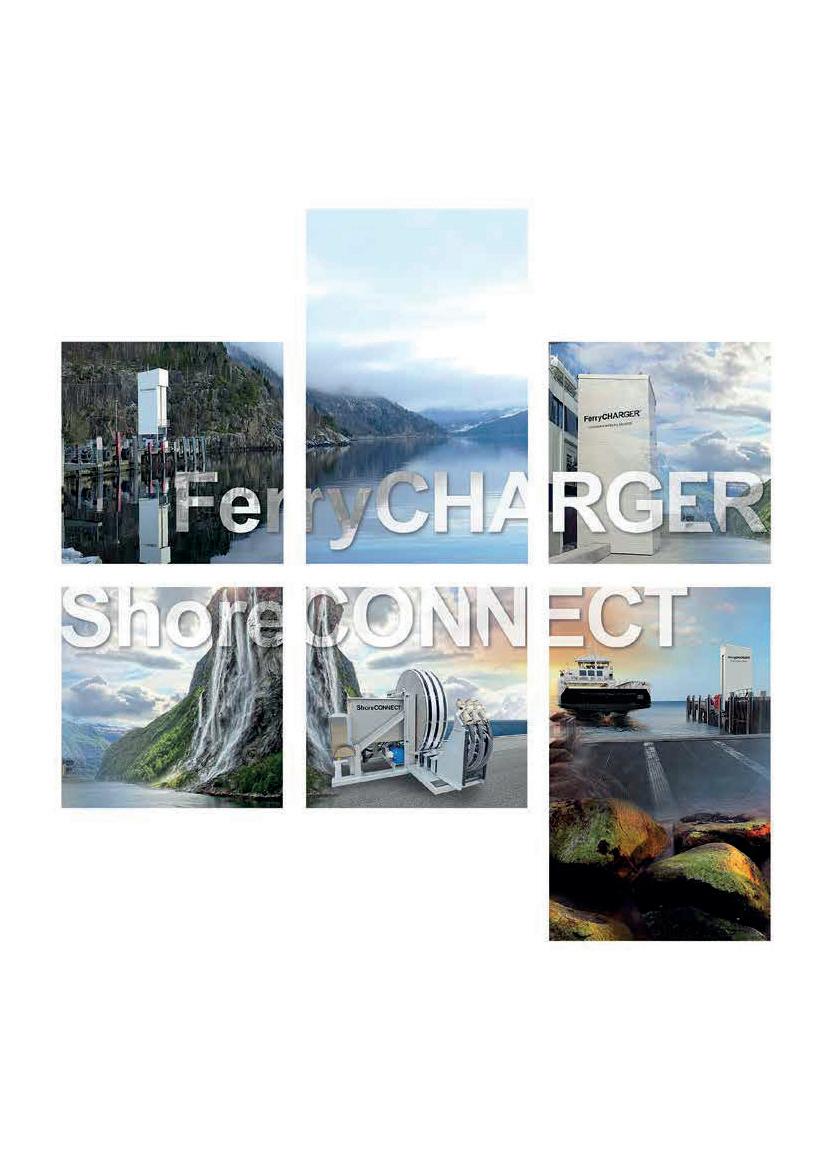
NEWS
16 Global Briefing
CO2 reductions, electric vehicles, vertical gardens and smart ports
8 Product News
Efficient reachstackers, E
RTGs, solar power and green tugs
9 GreenPort Cruise & Congress
Now rescheduled until
October 2021 because of
Covid-19
FEATURES
16 Green dredging
The sector is evolving aided by environmental causes, says René
Kolman, IADC
19 Clever microgrids
San Diego Port talks to
GreenPort about producing its own power
26 Clean-technology
Three Swedish clean tech companies focus on environmental efficiency
CONTENTS
15 7
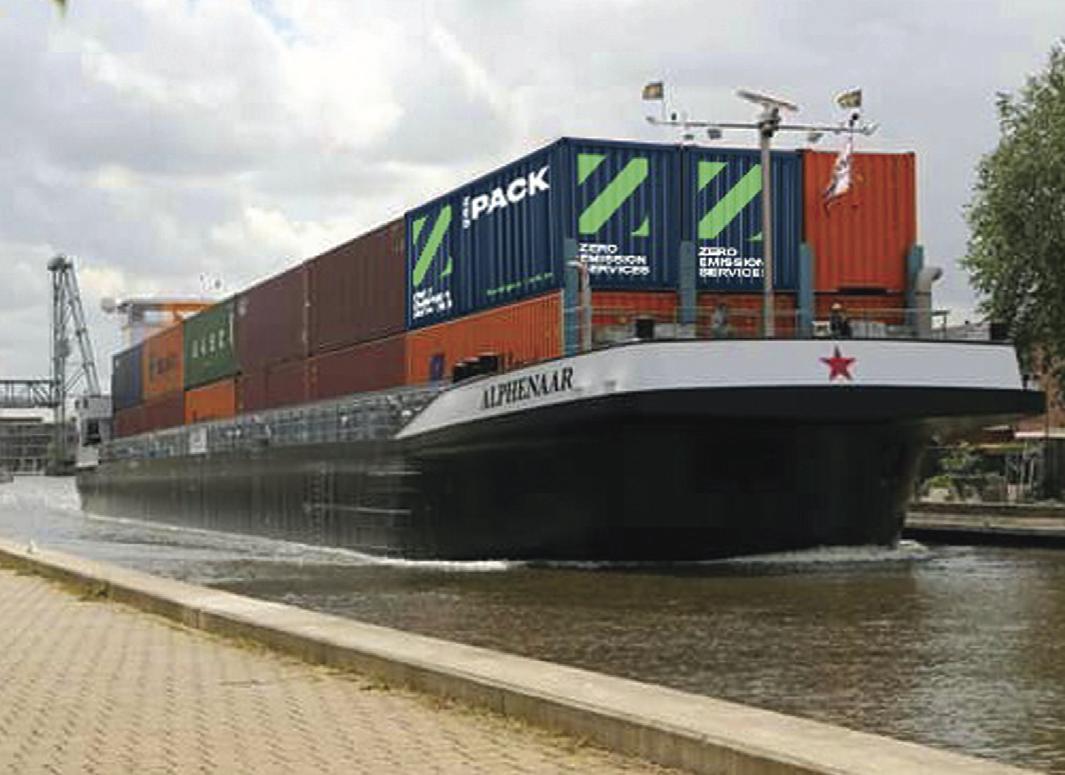


18
REGULARS
11 Europe Viewpoint Norway leads a green automation project to clean up its waterways
13 Asia Viewpoint
Singapore is reaching the end of its LNG bunkering project
15 Australasia
Viewpoint
The first port in the region is now EcoPorts certified, says Dave McIntyre
18 US Viewpoint
Susan Parker takes a look at Quebec’s sustainable cruise objectives
22 Cruise Focus
Michele Witthaus talks to
Marseille Fos about LNG infrastructure
25 Africa Focus
Covid-19 has made
Mombasa Port more efficient, writes Shem
Oirere
28 Opinion
An EU Green Deal update for ports from Isabelle
Ryckbost, ESPO
29 LNG Focus
A round up of port focused
LNG stories from around the world
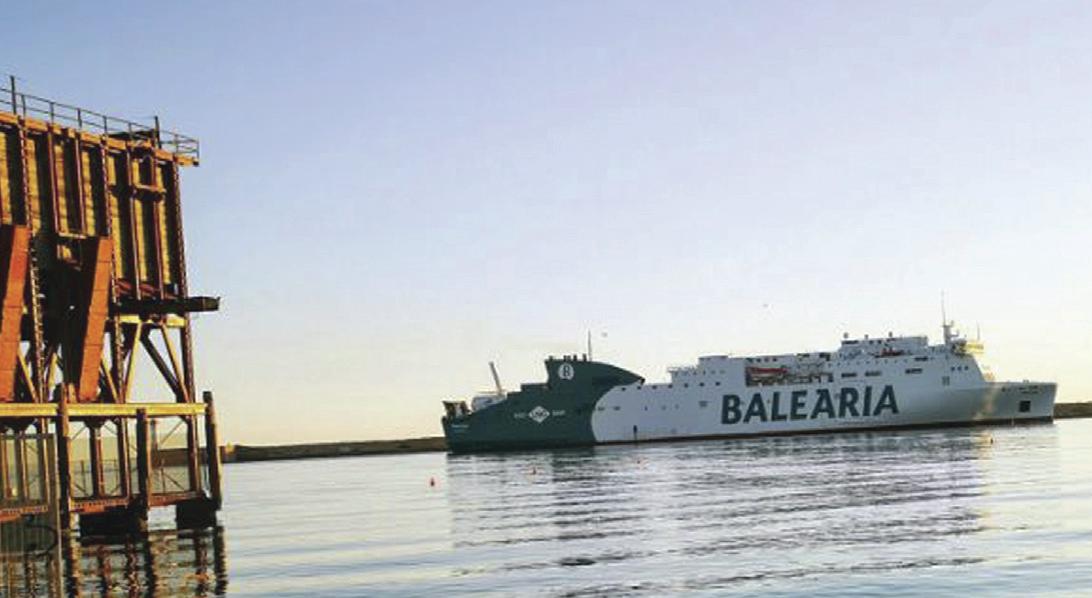
29

It's even more important now than ever to join together and swap best practice tips to move forward and protect our industry EDITOR’S DESK
ANNE-MARIE CAUSER ❘ Editor
Onwards and upwards
Welcome to the summer 2020 issue of GreenPort and a world that is standing together in solidarity to face the ‘new normal’.
At the time of press, many countries, thankfully, are seeing a downward trend in the Covid-19 pandemic and are taking tentative steps to begin their economic recoveries.
The current market outlook for the marine industry certainly looks a bit more positive than it did in March 2020.
The International Monetary Fund (IMF) recently reviewed its forecast for GDP growth in 2020, where growth across most of the world transitioned into a deep recession. It's now optimistic for 2021 when it believes the world economy will recover.
It will take time for the cruise market, as well as the RoRo and RoPax industry to recover due to the travel bans and restrictions put in pace during lockdown, but they will.
But in this recovery period, where do climate and environmental objectives stand now that we are working to get our lives back to ‘normal’? Will these be placed on a back foot now in favour of ‘recovery’ and ‘progress’?
Thankfully most people think not.
On 27 May, EU Commission President von der Leyen presented her Recovery plan for Europe making it clear that Europe wants to aim for a ‘Green Recovery’ and turn the crisis into an opportunity.
But what will the cost be? It is probably safe to assume that support for businesses will be linked to climate and environmental targets, introducing green conditionality for recovery support, maybe this is not such a bad thing?
In this issue, we look at how some sectors have been undertaking game changing decisions to adjust their operations in order to do business, which has impacted in a positive way on their environmental footprints.
We look at how clean-tech companies are positioning themselves in the industry to help the market achieve environmental regulation, how sectors such as dredging and marine construction are becoming more sustainable and how the cruise industry is adapting to welcoming back customers in the 'new normal'.
There is very good reason to believe that the pandemic will further increase demands from environmentally conscious customers on the industry. As such, the operation of cleaner, greener operations will be required more than ever.
Ports and terminal operators would do well to listen to their customers and ensure they can provide all of the new requirements that ship operators need going forward.
In the words of Johan Burgren at PowerCell: “It is time to reflect, look at what is coming in the future and time to act.”
It's even more important now to join together and swap best practice tips to move forward and protect our industry.
The GreenPort LinkedIn group has been created for this exact reason. Please request to join it and bring your suggestions and knowledge to the table.
https://www.linkedin.com/groups/4443775/
Thank you.

EDITORIAL & CONTENT
Editor: Anne-Marie Causer editor@greenport.com News Reporter: Rebecca Jeffrey rjeffrey@mercatormedia.com
Correspondents
Dave MacIntyre, Australia Shem Oirere, Africa Susan Parker, America Michele Witthaus, Cruise
Contributors
Isabelle Ryckbost René Kolman
Production
Ian Swain, David Blake, Gary Betteridge production@mercatormedia.com
SALES & MARKETING
t +44 1329 825335 f +44 1329 550192
Media Sales Manager: Tim Hills thills@greenport.com
Media Sales Executive:
Hannah Bolland hbolland@greenport.com Chief Executive: Andrew Webster awebster@mercatormedia.com
Published quarterly by Mercator Media Ltd, Spinnaker House, Waterside Gardens, Fareham, Hampshire PO16 8SD Tel: +44 1329 825335 Fax: +44 1329 550192 E-mail: sales@greenport.com Website: www.greenport.com
Registered in England Company Number 2427909 Registered office address: c/o Spinnaker House, Waterside Gardens, Fareham, Hampshire PO16 8SD
Printed by: Holbrooks Printers Ltd Hilsea, Portsmouth, Hampshire PO3 5HX
Subscription Rates: £79.50 pa For subscriptions contact amccartney@mercatormedia.com
©Mercator Media Limited 2020 ISSN: 2045-6085 (print) ISSN: 2633-4488 (online)
Printed in the UK by Holbrooks Printers Ltd on paper produced from elemental chlorine free pulp sourced from sustainable managed forests
Cover image:
Photo: Michelle Maria/Pixabay
BRIEFS
Efficiency gains One South Asian terminal has introduced an e-clearance system for containers in response to social distancing requirements introduced during the Covid-19 pandemic. South Asia Gateway Terminal (SAGT) at the Port of Colombo in Sri Lanka said that elimination of clearing agents and the A German port management
eradication of physical interaction has greatly improved efficiency at its Terminal Documentation Centre.
Vertical garden
A New Zealand port operator has installed the world's largest soil-based vertical garden on its premises to contribute to bio-diversity in the wider environment. Ports of Auckland (POAL) installed the garden on its cargo handling building currently being built on Auckland's waterfront. Tony Gibson, chief executive of Ports of Auckland, said “This vertical garden is one of several design features of the new building that will improve the look of the port and better integrate it into the central city.”
Smart port France’s largest port has secured funding to develop digital solutions for increased efficiency and environmental performance. The Port of Le Havre's Smart Port Project has 80 public and private sector partners and aims to tackle the challenges of integrating port, industry and city to deliver an integrated Seine corridor. “We want to create the port of the future and provide a 'smarter' territory through a new integrated industry and port model,” said Jérôme Besancenot, information systems manager at HAROPA Port of Le Havre.
MAJOR CARBON EMISSIONS REDUCTION
logistics solution for the company has reduced CO2 emissions by 70% over five years in line with its sustainability strategy.
bremenports' new sustainability report presents its activities for 2017/2018. The report shows that compared with 2011, when the Bremen and Bremerhaven ports (ports of Bremen) that it manages produced more than 7000t of CO2, the company has succeeded in reducing CO2 emissions by 70%.

MAKING PROGRESS
In 2018, rail hinterland traffic achieved very good figures, both in terms of the modal split as well as in absolute volumes, said the company. Over the last ten years, the share of rail in hinterland traffic has risen from 41.3% to 46.4%, an increase of 5%. The share of road traffic decreased from 56.0% to 50.5%.
The share of ships with an ESI Score calling at the ports, i.e. vessels which are more environmentally friendly than demanded by law, is now 40%, almost four times higher than on the introduction of the ESI in 2012.
Electricity from renewable energy sources is available for barges at 21 berths in Bremen. The company said it is making progress with its efforts to electrify its fleet. At the beginning of 2020, the bremenports fleet included seven electric vehicles with different ranges, as well as three hybrid vehicles for longer journeys.
Four electric bicycles and an
8 Bremenports has significantly
reduced its CO2 emissions
electric cargo bike at the building yard can be used instead of a car for short journeys.
Additionally, bremenports has introduced ‘Guidelines for sustainable, energy-efficient procurement’, which contain clear specifications for the purchasing of products including office equipment, electric motors and pumps.
ELECTRIC VEHICLES TACKLE CO2 EMISSIONS
A US port has made an eco-investment in five electric vehicles and three charging stations in order to reduce CO2 emissions.
Port Houston's investment in the Chevy Bolt electric vehicles and charging stations was made possible by a Houston-Galveston Area Council emissions reduction incentives grant of US$72,438, received last year.
“Port Houston's 100% assetbased renewable electricity contract makes these electric vehicles truly zero emissions,” said Kelli Gallagher, environmental compliance coordinator for Port Houston.
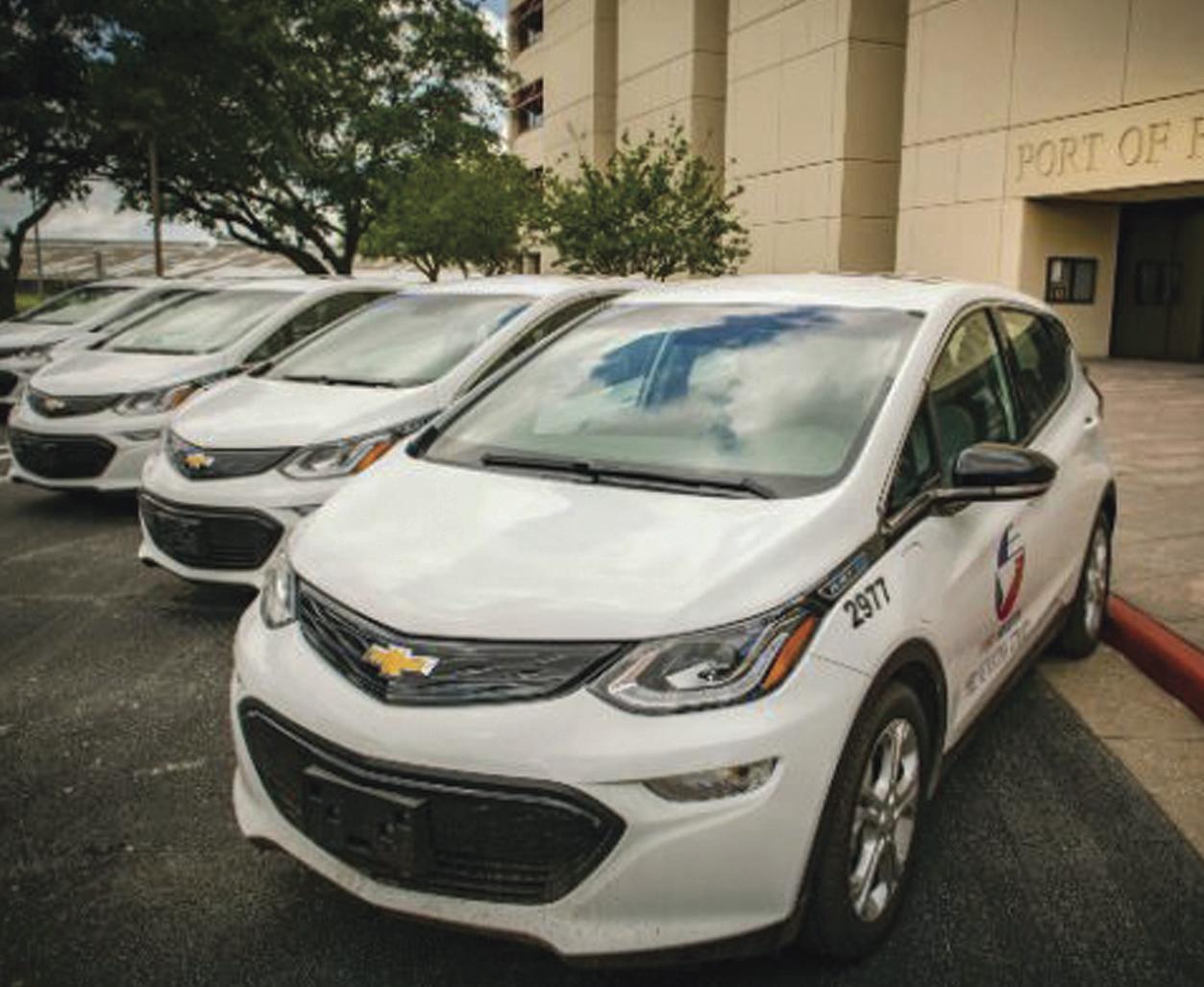
CO2 REDUCTION
In addition to cutting CO2 emissions by 18 metric tonnes per year with the use of the vehicles, the port is expected to save more than US$400 a year per car as electricity is much cheaper than fuel. Life cycle savings are estimated at seven cents per mile. The vehicles each have a 259-mile
8 Port Houston has invested in five Chevy Bolt electric vehicles and three
charging stations
battery. Port Houston's maintenance department installed the charging stations and ran the electrical lines underground at the port's facilities.
“Port Houston staffers are excited and proud to be using electric vehicles. These vehicles are clean, meaning they pollute less, but they are also more efficient than gasoline-fuelled vehicles,” said Mike Gignac, manager of central maintenance for Port Houston.
EMISSIONS-FREE BARGE CONCEPT
A consortium is working on making Dutch inland waterway shipping more sustainable in line with Paris Climate Agreement goals.
The consortium called Zero Emission Services B.V. (ZES) includes Wärtsilä, ING Bank, Engie and the Port of Rotterdam Authority, with support from the Dutch Ministry of Infrastructure and Water Management.
“This innovative concept aligns completely with Wärtsilä's commitment to lessening the environmental impact of shipping. It is something we are proud to be a part of,” said Tamara de Gruyter, President, Marine Systems & Executive VP, Wärtsilä.
CLIMATE GOALS
The concept is based on the use of replaceable battery containers, to be known as 'ZESPacks' which can be charged using energy from renewable sources.
The ZESPacks are designed for multiple applications, enabling them to be utilised for temporary onshore use, such as stabilising
Four new electric cars have arrived at an Australian port as part of sustainability plans to transition to an all-electric fleet and cut emissions.
The Port of Newcastle has taken delivery of four Hyundai Ioniq electric cars and aims to have 13 by the end of 2021, to cut its
8 The consortium says it’s committed to promoting emissions-free inland
waterway transport
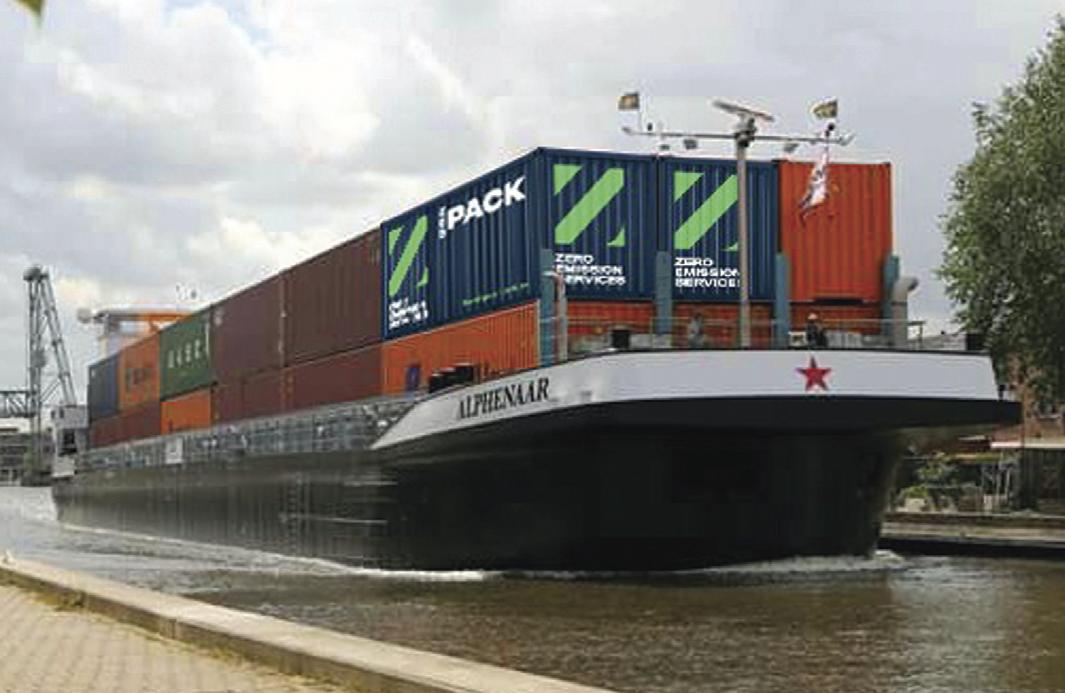
Photo: ZES
the local electricity grid or meeting short-term demand for electrical power.
A network of open access charging points will be set up for exchanging depleted battery containers for ready-charged replacements, thereby keeping waiting time to a minimum.
Wärtsilä said that the system is future-proof since it is independent of the energy carbon emissions by 48t annually.
Port of Newcastle Chief Commercial Officer Simon Byrnes said: “Switching to electric vehicles will save more than 48 tonnes of carbon emissions annually."
Through a partnership with City of Newcastle, the Port is also sponsoring two electric vehicle provider. Initially batteries will be employed but should, for example, hydrogen become a viable alternative at some point, containers equipped with hydrogen technology could supply power in the same way.
To make it easier for barge operators to sign-on to the concept, a 'pay-per-use' financing model has been developed, so the skipper's
ELECTRIC CARS SUPPORT SUSTAINABLE OPS
operating costs remain competitive.
8 Australia’s Port of Newcastle has taken delivery of four Hyundai Ioniq electric cars
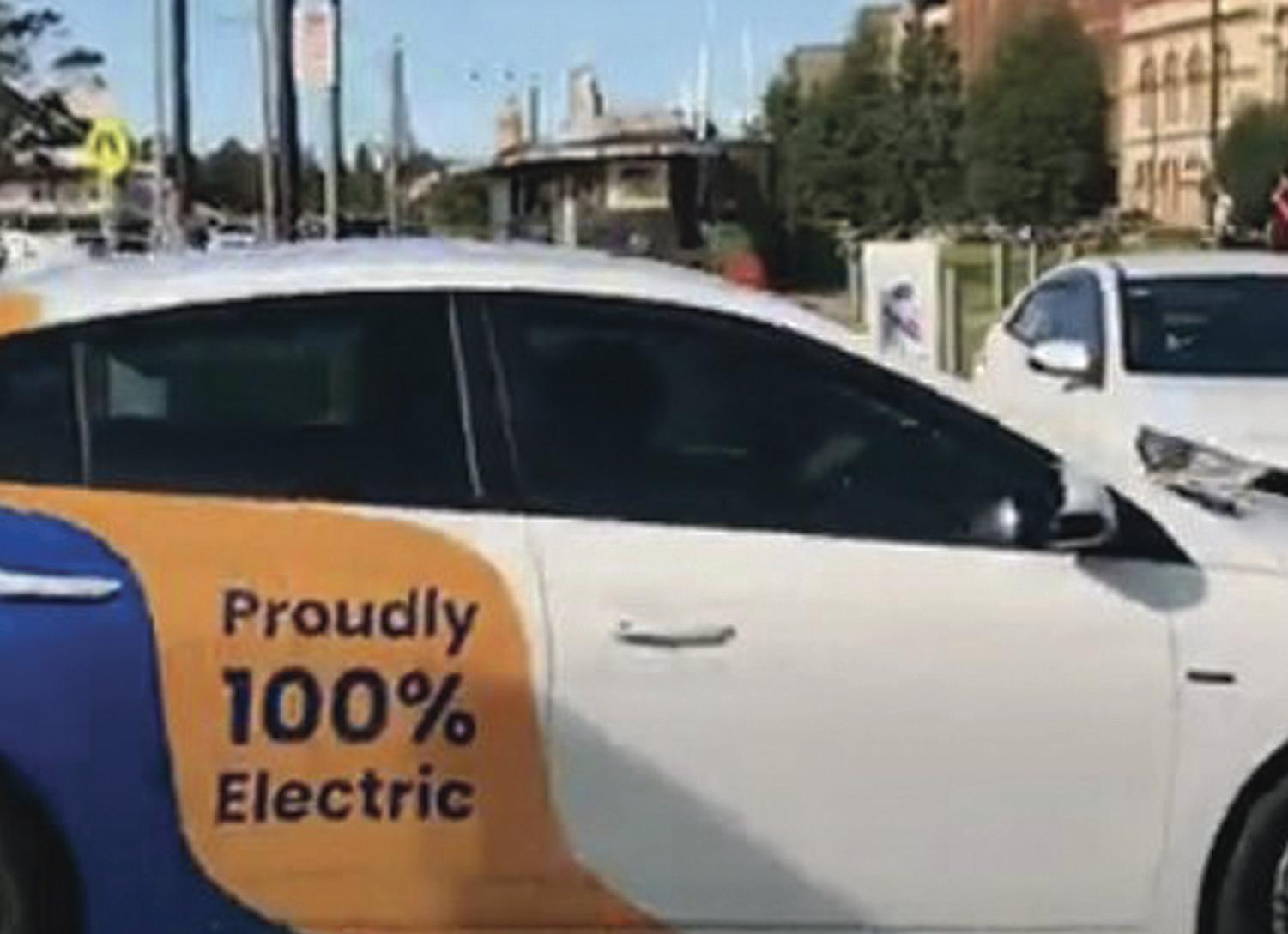
Photo: Port of Newcastle charging stations located near its head office on Wharf Road.
The 22-kilowatt chargers - collectively enabling four vehicles to be plugged in simultaneously - are powered by 100% renewable energy. They will initially be free before user-pay fees are later introduced.
Mr Byrnes added: “It is a pleasure to partner with the City of Newcastle to help expand its electric vehicle charging network and promote renewable energy and sustainable transport options in the region,” Mr Byrnes said.
“Port of Newcastle is serious about its commitment to the environment and creating a prosperous future for the communities it supports. Ultimately, we are striving to create a safe, sustainable and socially responsible Port for the future.”
Earlier this year, Port of Newcastle became the first port in Australia or New Zealand to be certified under the EcoPorts Port Environmental Review System (PERS).
BRIEFS
Offshore wind investment Up to one billion Danish kroner will be invested into new infrastructure facilities at a Danish port to support the wind turbine industry. Nordic infrastructure fund Infranode has partnered with the municipally owned Port of Esbjerg to invest in infrastructure facilities for storage, preassembly and manufacturing of components for the offshore wind industry.
SeaBins clean up
Three SeaBins have been installed at a UK port to help keep surrounding waters clean and promote a healthy marine ecosystem. The Port of Dover's new Seabins, installed in the marina, work by trapping litter and debris in the water to prevent it from being released into the sea. Liz Fagg, environmental manager at the Port of Dover, said: “Environmental sustainability is fundamental to the port's day to day operations and we are always committed to delivering new initiatives that ensure our special marine environment is healthy and protected.”










